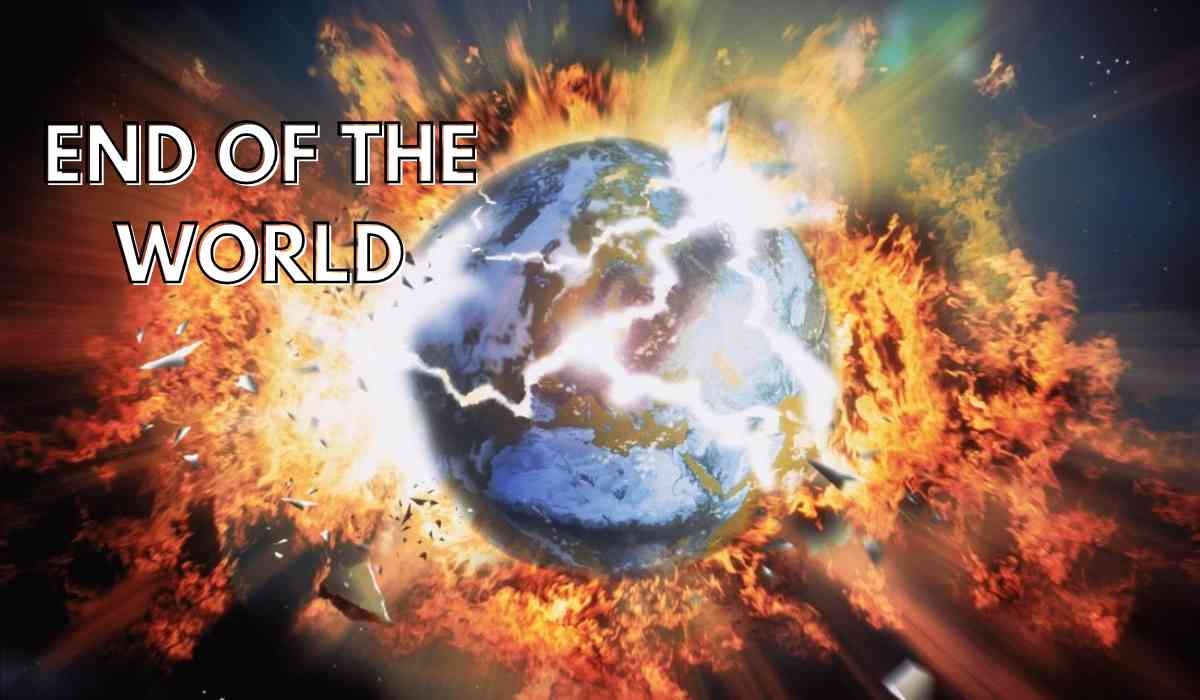We all know that the end of the world will eventually come, but what exactly will it look like?
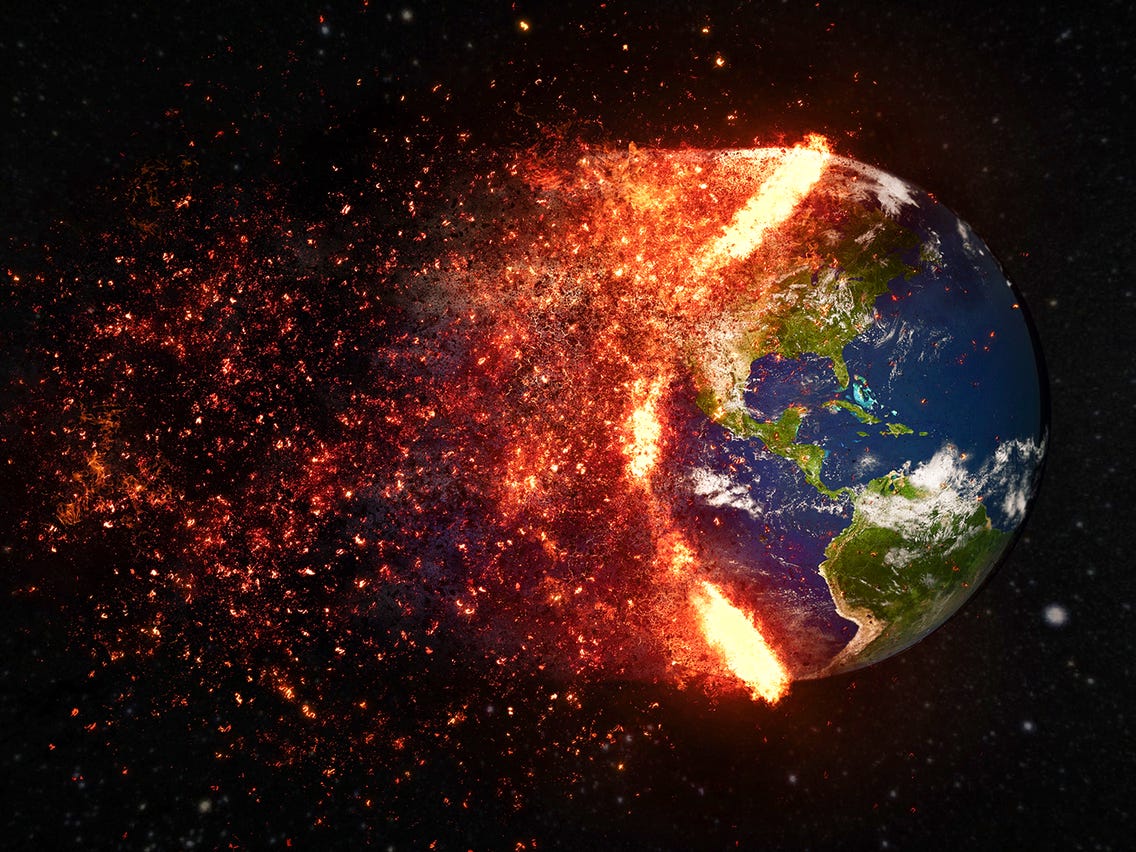
In a new study, scientists have warned that Earth's demise could be even more violent and chaotic than we thought. The culprit? Our beloved Sun.
The Sun gives energy to life on Earth, and without this star, we wouldn't be here. But even stars have limited lifetimes, and someday our Sun will die and our planet will be swallowed by it before it becomes a white dwarf. Meanwhile, other planets in the solar system will be "crushed and ground to dust," a new study has found.
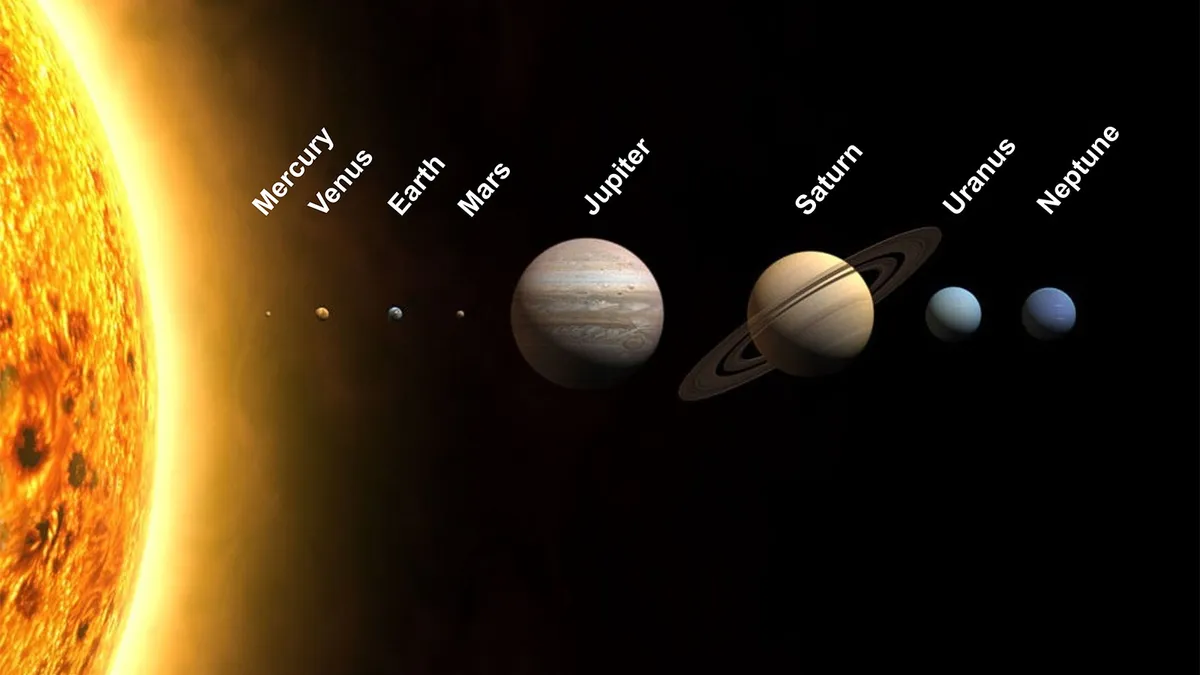
From Red Giant to White Dwarf
When the Sun runs out of fuel, it will become a white dwarf, exerting a huge gravitational pull that could suck our system into where it will be crushed. But there's no need to panic just yet, as the scientists say this will likely happen in around 6 billion years. Our planet will be swallowed by our expanding sun. Meanwhile, other planets in the solar system will be "crushed and ground to dust." Fortunately, there's no need to panic yet, as scientists say this will likely happen in about six billion years.
A red giant becomes a white dwarf
Stars like our Sun generate light and heat by crushing hydrogen atoms into helium under the enormous force of gravity. However, all stars only have a limited amount of hydrogen, and when it runs out, the forces that keep the star stable become unbalanced. From about five billion years on, our Sun will burn through the hydrogen in its core, before ballooning outward to more than 200 times its original size as it begins to burn helium in its outer layers.
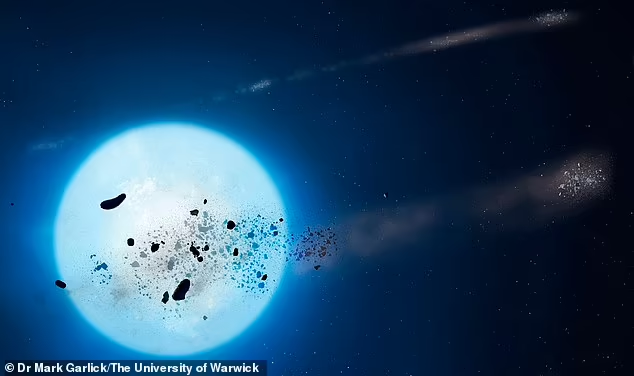
PC: Daily Mail
The sun:
Name: Sun
Well-known planets: Eight
Spectral type: G2
Distance from Earth: 150 million km
Distance from galactic center: 25,800 light-years
Mass: 1.9885×10^30 kgRay: 696,342 km
Brightness: 3.828×10^26 W
Temperature: 9,929 F
Age: 4.6 billion years
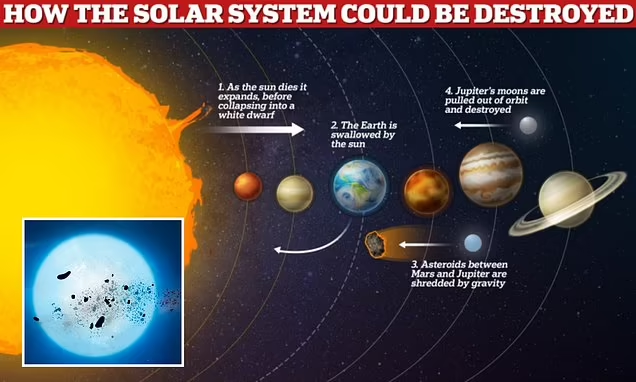
PC: Daily Mail
Chaotic Collisions in White Dwarf Systems
While some massive stars explode into supernovae during their collapse, our star is small enough to simply die out as it consumes the last of its nuclear fuel. When this happens in about six billion years, it will leave behind a white dwarf: an ultra-dense remnant of the Sun's core, glowing with residual heat as it slowly cools. These stellar cores can have as much mass as the Sun, but are no larger than Earth, giving them an extremely powerful gravitational field.
When big stars die, they explode
Scientists say that when our sun becomes a white dwarf star in six billion years, gravity will be so strong that some asteroids and even Jupiter's moons could be 'shredded' and ground into dust. The fate of bodies surrounding white dwarf stars is likely to be catastrophic and violent, as objects that come close to the dense core are fragmented by gravity and ground into dust when they collide with each other.
For the rest of the solar system, some asteroids between Mars and Jupiter, and perhaps some of Jupiter's moons, could break away and get close enough to the eventual white dwarf to undergo the fragmentation process. The unpredictable nature of white dwarf systems makes them difficult to study, but the researchers believe that chaotic and violent events are inevitable.
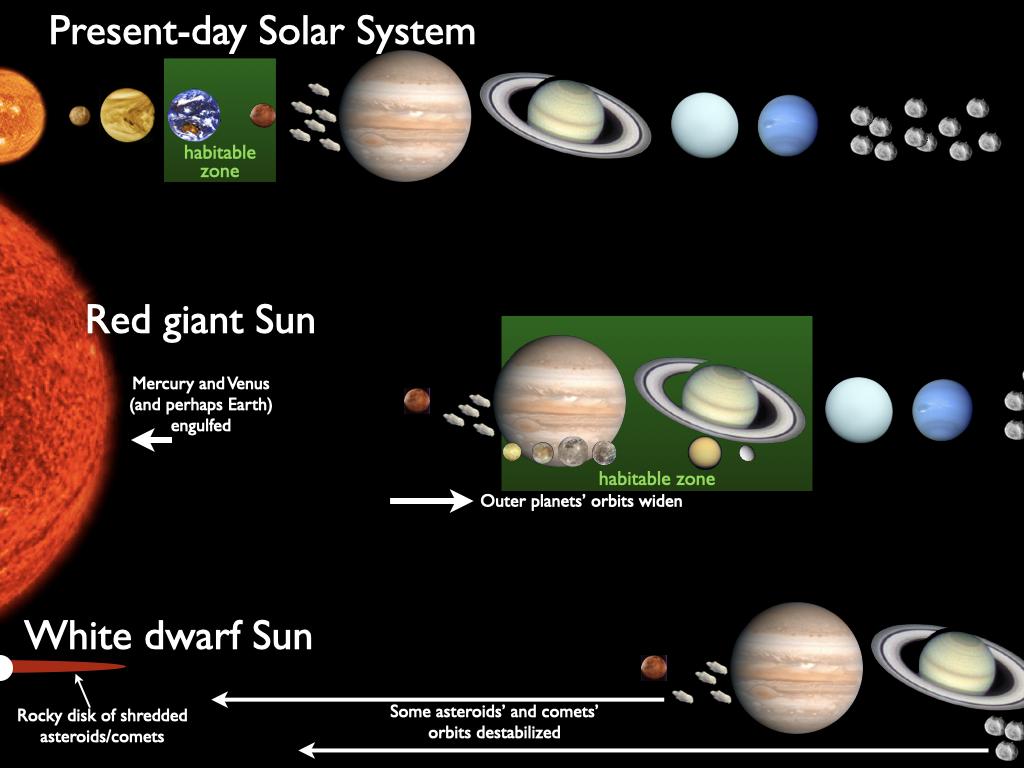
What happens to the Earth when the Sun dies?
In approximately five billion years, the Sun will undergo a remarkable transformation. It is predicted that the Sun will expand into a red giant star, swelling to more than a hundred times its present size. During this process, the Sun will shed its outer layers, emitting gas and dust that will envelop it, forming an expansive 'envelope' that could constitute up to half of its mass.
As the Sun expands and sheds its outer layers, its core will contract and cool, eventually becoming a small white dwarf star. This white dwarf will continue to emit light for thousands of years, illuminating the surrounding envelope and creating what is known as a planetary nebula.
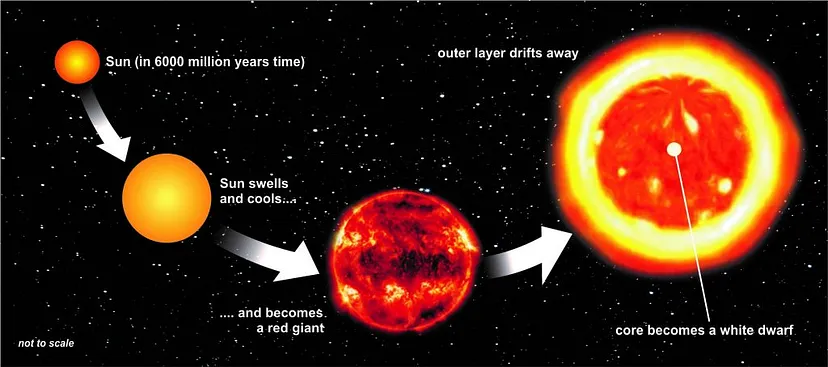
The fate of Earth in this scenario is uncertain. While it is clear that our Sun's transformation into a red giant will have profound effects on our solar system, including potentially rendering Earth uninhabitable due to increased brightness and heat, the ultimate destiny of our planet's rocky core remains unclear.
Will it survive intact, or be consumed by the expanding Sun? Scientists continue to explore these questions as they probe the mysteries of our Sun's lifecycle and its impact on the planets orbiting it.
So, while the end of the world may not be imminent, the fate of our solar system at the hands of a white dwarf star is a chilling reminder of the violent and unpredictable nature of the universe. As we look up at the sky and marvel at the beauty of the stars, let's also remember their power to one day bring about our ultimate demise.
With inputs from agencies
Image Source: Multiple agencies
© Copyright 2024. All Rights Reserved Powered by Vygr Media.

